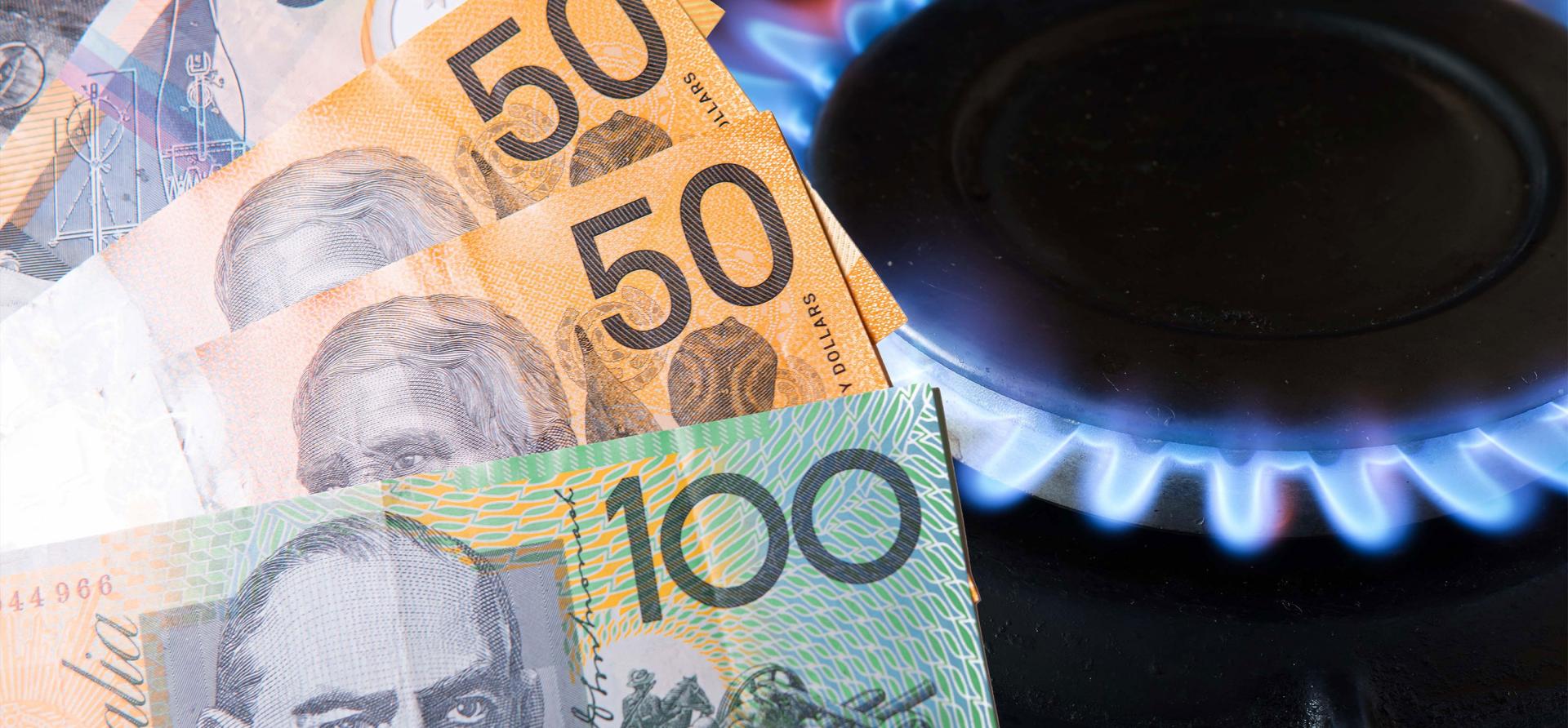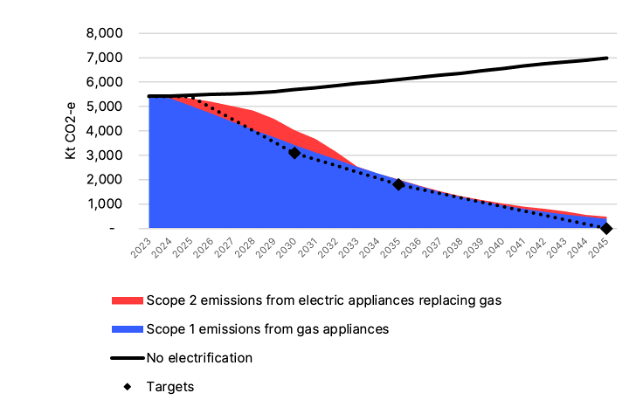Ending the sale of gas appliances would address Victoria’s fossil gas dilemma and unlock savings for consumers

Key Findings
Transitioning residential gas appliances to electric at end of life from 2025 is crucial for Victoria to avoid its gas supply shortfalls, meet emissions reduction targets and protect consumers.
This will challenge the business model of gas distribution networks, which may could face billions in unrecovered costs, but these costs are far outweighed by the financial savings for consumers.
Delaying the transition to all-electric homes could lock in very high costs for consumers.
IEEFA’s latest analysis, released on 2 November, finds that transitioning residential gas appliances to electric at end of life from 2025 is crucial for Victoria to avoid its gas supply shortfalls, meet emissions reduction targets and protect consumers.
This will challenge the business model of gas distribution networks, which may could face billions in unrecovered costs. However, these costs are far outweighed by the financial savings for consumers.
Delaying the transition to all-electric homes could lock in very high costs for consumers – but there are actions governments can take now to plan for a managed transition that maximises the economic benefits of electrification.
Ending gas appliance sales by 2025 presents a compelling option for governments
Victoria accounts for 63% of Australia’s total household gas consumption due to its long reliance on cheap Bass Strait gas for heating. Those reserves are rapidly running out, and in four years the state might not have enough gas.
Australia has no shortage of fossil gas at a national level. However, transporting more of that gas to Victoria is likely to require expensive infrastructure with long lead times, poorer outcomes for energy bills, and would be incompatible with emissions targets.
By contrast, strategies to reduce demand for fossil gas would lead to savings for consumers. IEEFA estimates that the average Victorian home could save $1,200 a year on its energy bills by going all-electric. The most economical point to switch to electric appliances is when a household’s old gas appliances reach their end of life, and are due for replacement.
Our research found that if gas appliances were switched to efficient electric appliances at their end of life from 2025, it would significantly reduce and delay Victoria’s annual gas supply shortfalls, and reduce residential emissions to align very closely to the state’s economy-wide targets.
Electrifying gas appliances at end of life will reduce residential emissions, supporting Victoria’s economy-wide targets

Source: IEEFA modelling. “Targets” refers to Victoria’s economy-wide emission reduction targets, if mapped to residential gas emissions using a 2021 baseline.
It won’t be the only action needed to eliminate fossil gas demand in Victoria and mitigate the full gas supply shortfall predicted by AEMO.
However, it does most of the heavy lifting required from the residential sector, and avoids the need to replace gas appliances before their end of life.
It is also an equitable solution for the 28% of households in Victoria that are rented. Many of these households are locked out of the savings from home electrification, as the decision to switch to electric appliances lies with rental providers, who have no incentive to do so.
For each year gas appliances are converted to electric rather than installing gas replacements, consumers will also avoid $912 million in locked-in costs. This considers both the relative upfront and running costs across the lifespan of those appliances.
Of course, many households may choose to replace their gas appliances with electric alternatives before they wear out anyway, as this is often financially attractive. It will be important to support households, including rental properties, that wish to make this switch.
The Victorian government has announced that its rebooted State Electricity Commission will establish a “one-stop shop” for home electrification, empowering households with the information they need to minimise their energy bills. This will help households make the switch.
Gas distribution networks face unrecovered costs, but consumers will benefit
As households move off reticulated gas, a plan is needed to wind down gas distribution networks.
If networks continue to fully recover their costs from residential customers, those customers could face unprecedented price rises.
This could trigger a “gas death spiral”, where users leave the network in an uncontrolled and unpredictable fashion, leaving costs to be disproportionately borne by those who are not able to electrify easily – typically renters and low-income households.
However, the Australian Energy Regulator has the power and remit to limit the price increases passed on to consumers. The regulator is not required to ensure gas distribution networks fully recover their costs from consumers.
It is likely the regulator may act in the interests of energy consumers to cap the rise in gas distribution tariffs. We found that if this cap were set at 2.5% pa to 2050 (a conservative assumption that still implies a significant increase), gas distribution networks could face $3.5 billion in unrecovered costs as end-of-life gas appliances are electrified.
There is not a strong case for governments to compensate networks for the bulk of their unrecovered costs. Despite being regulated monopolies, Victoria’s gas distribution networks have received extraordinarily high rates of return over the past decade.
While the likelihood of significant unrecovered costs isn’t a great outcome for networks, the benefits consumers will gain from switching to electric appliances over the same period are significantly greater – approximately $17 billion in savings.
Unrecovered gas distribution network costs vs consumer savings

Source: IEEFA analysis of network costs and appliance upfront and running costs if a 2.5% annual cap is applied to gas distribution price increases from 2028.
This indicates that while electrification of end-of-life gas appliances challenges the gas distribution network business model, it is still likely to present an attractive solution for decision makers due to the huge scale of consumer benefits on offer.
Governments can act now to maximise the benefits of home electrification
Victoria has a narrow window to avoid forecast annual gas supply shortages by 2027. Ensuring residential electrification keeps pace by electrifying gas appliances at end of life will help reduce the gas supply shortfall, as well as keeping Victoria aligned to its emissions reduction targets.
The costs of delaying the transition to electrification are significant, as the locked-in costs and stranding risks compound for every year Victorians continue to invest in gas appliances.
It is necessary to start planning now to support households to electrify and to wind down gas distribution networks, to maximise the potential benefits to consumers and the energy system, while minimising costs and financial risks.
To facilitate a managed transition to all-electric homes, IEEFA recommends that governments:
- Ensure gas appliances are replaced with efficient electric alternatives at their end of life by 2025 where possible;
- Encourage early replacement of gas appliances with electric alternatives where it makes financial sense, including for renters and low-income families;
- Develop a plan to wind down gas distribution networks;
- Identify and implement solutions for hard-to-electrify homes, including apartment buildings;
- Strengthen standards and market arrangements to support greater uptake of energy efficiency, Distributed Energy Resources (DER), such as rooftop solar and household battery storage, and demand flexibility; and
- Develop a strong electrification workforce and supply chain, mirroring the successful scale-up of Australia’s rooftop solar industry.
This article first appeared in ReNew Economy.
















